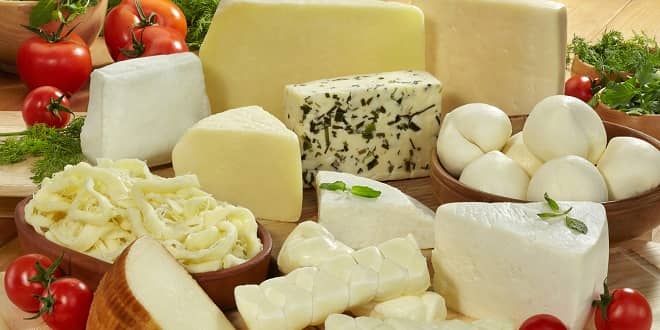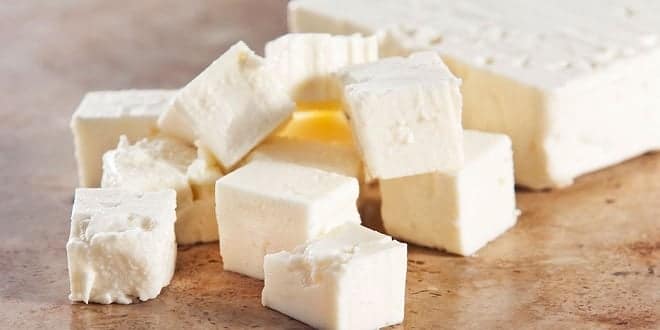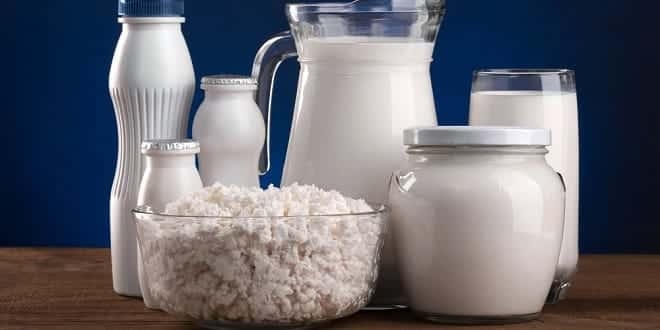Cheese Production Presentation
CHEESE
Definition of Cheese fresh or mature solid or semi-solid product obtained:
• by coagulating milk, skimmed milk, partly skimmed milk, cream, whey cream, or buttermilk, or any combination of these materials, through the action of rennet or other suitable coagulating agents, and by partially draining the whey.
TURKEY’S PRODUCTION
Beyaz , Edirne ,Teneke ,Salamura % 60
Kaşar % 17
Tulum ve Mihaliç % 12
Others % 11
Clarification
(1) Cloth filters: to remove debris at the farm.
(2) Centrifugal clarifiers, medium speed centrifuges, remove particles which escape filtration.
(3) Bactofugation: high speed centrifugal process which separates bacterial cells and spores. Bactofugation removes 95% of the spores of milk
(Clostridium tyrobutyricum reduced but not eliminated)
1-2% of milk solids is transferred to the bactofugate
Standardization of cheese milk composition milk fat or protein or both.
The objective: to obtain the maximum economic return from the milk components.
Cheese yield is mainly determined by the recoveries of protein and fat
Heat treatments
-fully pasteurized milk cheese (63C, 30 min. or 72C, 16 s
-raw milk cheese. No heat treatment, more flavor. “held at 20C or more for a period of 60 days
Thermisation (63-65C, short hold) results in phosphatase positive milk which must be fully pasteurized before cheese making. over pasteurization causes denaturation of whey proteins
The effects are:
Longer flocculation times
Weak or no curd formation
Excessive loss of fines
Poor syneresis (moisture release)
Coarse textured curd with reduced ability to stretch, mat and melt.
Heat treat (55 – 65C, 16 s): subpasteurization to destroy most pathogens, some bacteria survive and contribute to cheese ripening.
This process permits fuller flavor of cheese
current regulatory purposes, subpasteurization is equivalent to raw.
Homogenisation :
fat globule sizes: from 1–15 to less than 2 micrometer.
promotes lipolysis, whitening, and flavour development
increases fat recovery and creates smoother texture in cream cheese.
Increased cheese yield due to greater moisture retention and improved fat and protein recovery.
Other additions before making the curd
Calcium chloride (CaCl2) If the milk is of poor quality for cheese making, the coagulum will be soft: heavy losses of fines (casein), fat, poor syneresis.
Add 5–20 g CaCl2 /100 kg of milk (if excessive curd is very hard)
Saltpetre (NaNO3 or KNO3)
for Clostridia and/or coliform too much saltpetre will also inhibit growth of the starter.
high doses may discolour the cheese, causing reddish streaks and an impure taste.
Max. 30 g/100 kg of milk.
Annatto : orange color for Cheddar
carotenoid similar to -carotene and Vitamin A in structure, but it has no Vitamin A activity.
Alternatives to annatto are:
Beta-carotene which is too yellow and makes the cheese taste like carrots.
-Apo-8-carotenal ( not lost in the whey.)
Adding CO2 by artificial means lowers the pH by 0.1 to 0.3 units, improves the quality)
result in shorter coagulation time or lesser rennet usage.
Development of Starter Cultures
LAB occur naturally in raw milk.
first commercial cultures: powdered starters by Chr. Hansen Labs (Denmark) end of the nineteenth century.
Microbiology of Starter Cultures
Mesophilic Starters (32 C)
Lactococcus lactis:the dominant acidifying mesophile
Leuconostoc mesenteroides ssp. Cremoris: catabolize citrate to carbon dioxide and the flavor compound, diacetyl.
If procedure includes high temperatures,
( Swiss, Parmesan, and Mozzarella), then a thermophilic lactic acid bacterial culture used.
The mesophilic cultures are the workhorses of the cheese industry, and are used for the majority of cheeses
Thermophilic Starters(45 C)
S thermophilus and species of Lactobacillus (Lb): bulgaricus, helveticus and lactis.
They are used in those technologies where a T> 40 °C is used, such as yogurt, Mozzarella, Emmenthal.
Function of Starter Cultures
1- acidification, (enhances the expulsion of whey , promotes the development of the texture)
2- texture enhancement, pH dictate the texture
3-flavor development.
4- Eye formation
5- health benefits.
possible causes of starter culture inhibition:
-antibiotics
-natural immunoglobulins bind to bacteria, forming clumps that eventually settle in the vat
– inhibitor is formed via the lactoperoxidase reaction
-Chemical agents used to sanitize cheese vats can occasionally inhibit cultures
-bacteriophages, viruses that infect bacteria
coagulation of milk proteins (casein) by one of:
A) milk-clotting enzyme, rennet( most cheeses.)
B) Direct acidification of milk to pH 4.6, or in situ production of acid by starter bacteria( cottage cheese)
C) Heat/acid coagulation, in which hot milk (80–90°C) is acidified to pH 4.6–5.3.(ricotta, quark)
Rennets
‘rennet’ : milk-clotting enzyme prepared from calf stomach, ( contains the active enzyme chymosin (rennin).
Chicken pepsin and papain are used in some countries for cheese-making.
Also, rennets from kid and lamb stomachs are available.
Rennet marketed in form of a solution with a strength of 1:10 000 to 1:15 000( one part of rennet can coagulate 10 000 – 15 000 parts of milk in 40 minutes at 35°C. )
Rennet in powder form is normally 10 times stronger than liquid rennet.
Two stabilizing factors:
1-‘hairy’ layer of surface active protein, called kappa-casein , on the surface of the micelle.
2-negative charge on the micelles. At the pH of milk the micelles are negatively charged so they repel each other.
So,two ways to coagulate milk;
1- to remove the hairy layer(enzymic coagulation.)
2- to neutralize the negative charge ( by acidification or a combination of high temperature and acidification. )
Acid coagulation
by lactic bacteria or glucono-delta-lactone (GDL is slowly hydrolysed to gluconic acid in the presence of water).
Example: cottage and bakers cheese and quark and yoghurt, commercial butter milk, kefir etc.
Heat-Acid coagulation
whey proteins become sensitive to acid coagulation after heat treatment. (ie ricotta cheese)
80 C for at least five minutes to completely denature (unfold) the whey proteins
Continue heating and acidify slowly with gentle agitation.
CHEESE MAKING STEPS
Setting the Vat
Handling Rennets
firm coagulum in 30 – 40 min.
must be diluted (about 20 times): uniform distribution.
Only 2 ppm of chlorine will destroy 40% of rennet activity in 3 minutes.
hard water( pH >7.0) decreases rennet activity.
3 Cutting The Curd
Proper cutting: important for quality and yield.
Improper cutting: the loss of fines.
Determination of curd cutting time
early and late cutting cause losses of fines.
to determine cutting time.
Manual testing: ready to cut if it breaks cleanly when a flat blade is inserted at 45o angle to the surface and then raised slowly.
oscillating viscometry, thermal conductance and sonication have been tested experimentally.
Some plants cut by the clock.
Curd size ( affects moisture and fat retention)
High temperature and low moisture varieties: smallest curd( size of rice grains.)
Medium moisture cheeses(Cheddar): 1 cm cubes.
High moisture varieties like soft ripened cheese: 2 cm
Manual cutting
cutting harps ( stainless steel frame).
cutting time : The knives should be pulled (not pushed) to cut the curd cleanly.
Automated cutting
curd size:f( design of the vat, agitators, speed of cutting (rpm), duration of cutting)
Cheddar and American varieties:4 rpm for 7 – 13 min.
increased cutting time increases curd particle size: maximum fat recovery.
Heating/cooking/scalding
promotes contraction of the curd accompanied by expulsion of whey (syneresis).
Heating: step-wise progression, since too rapid heating causes the exterior of the curds to harden and actually reduce syneresis.
Heating beyond 44°C is called scalding.
9.5 Draining
Draining time should be uniform at about 20 min to prevent variation from vat to vat. ( if water is added back to the curds, then so-called “sweet” or low-acid cheeses will result)
6 Washing
Lactose content can be adjusted by moisture removal (syneresis), fermentation, or leaching with water.
Sometimes relatively hot water (eg., Gouda) is used to dry the curd and develop its texture.
Pressing
Pressing varies from little or none for soft cheese up to 172 kPa for firm Cheddar cheese.
The warmer the curd, the less pressure required.
9.9 Salting ( normally 3-7 %)
1-before pressing,2- surface salting after pressing, 3- brine salting.
Purposes of Salting
Promote further syneresis
Slow acid development
suppress spoilage bacteria. Lactics are more salt tolerant than pathogens and spoilage bacteria.
Promote controlled ripening and flavour development.
Salty flavour
Brine salting:
Concentration 16 – 25% NaCl
Time: 20 kg cheese, 5 days or sometimes several weeks
Brine pH should be adjusted to the pH of the cheese. ( pH of 5.2 – 5.6)
Still, the most commonly used system is to place the cheese in a container with brine.
The containers should be placed in a cool room at about 12 – 14°C.
Ripening processes: chemical and physical changes
breakdown of proteins, lipids and carbohydrates (acids and sugars) modifies flavour, texture.
Ripening: from nil for fresh cheese to 5 years
interior ripening (most hard ripened cheese such as Cheddar and Italian types) may be ripened with rind formation or may be film wrapped before curing.
surface ripening include smear ripened and mould ripened
Factors Affecting Yield
Casein: principal yield determining factor. ( absorbs water, minerals and own weight)
Fat: also a principal yield component. Fat interferes with syneresis and, therefore, also contributes more than its own weight.
Cheese moisture. 1% increase causes about 1.8% increase in cheese yield.
Cheese salt. extra 0.1% salt means extra 0.14% yield
Process control parameters that affects yield
Careless cutting.
Heating too fast at early stages of cooking
Salting too soon after milling of Cheddar: rapid salt uptake, rapid synerisis, increased solubility of casein. Yield is, therefore, reduced by losses of protein, fat and soluble solids.
High temp pressing: loss of fat.
Proteolytic cultures or coagulating enzymes cause protein losses before and after cutting.
Washing removes soluble solids.
Defects Caused by Lactic Acid Bacteria
Pediococci and lactobacilli : convert (+)lactate to (−)lactate, form insoluble calcium lactate crystals, undesirable white specks in ripened Cheddar.
heterofermentative LAB (e.g. Lactobacillus brevis, L. casei subsp. pseudoplantarum): open texture due to gas production.
In Swiss-type cheeses, some strains of L. bulgaricus produce a pink discoloration(due to propionibacteria. )
Defects Caused by Coliform Bacteria
coliforms : indication of poor sanitation( killed by pasteurization.)
grow rapidly in cheese during the first few days of storage.
The metabolites of coliforms : lactic acid, acetic acid, formic acid, succinic acid, ethanol, 2,3-butyleneglycol, H2 and CO2.
The production of H2 and CO2 results in early gas blowing of the cheese.
Manufacture of Blue Cheese( internally mold ripened, P. roquefortii )
allow O2 to enter the interior of the cheese and to allow CO2 out. ( cheese to breathe)
O2 supply is not generally a problem for surface mould-ripened cheeses, but for internally mould-ripened cheeses, ( a set of large bore needles (D= 0.24 cm) may be used to pierce the cheese for air to penetrate )
Cheddar Cheese
originated around the village of Cheddar, England, 30% of total cheese production of the World.
Moisture:of 35–40%, manufactured by renneting at 30 °C, cutting the coagulum into small pieces, cooking to 40 °C, drainage of the whey and pressing the curd.
textured in the vat (‘cheddared’), milled and dry-salted
molded, pressed for 12–16 h, and matured for 3–12 months, or longer.
Cheese with Eyes
Swiss cheese, easy to make but the hardest cheese to make well.
depends on two independent processes.:
-requires excellent curd handling (correct for eyes to form.)
-precise control of fermentation to poduce gas that ultimately results in eye formation.
the milk is usually standardized to 3% fat.
too much fat: too soft curd
not enough fat : too hard ……………….to poor eye development
-CO2 formation must be slow and steady.
-If too much CO2 is produced all at once or the curd is too firm: large or exploded holes are formed.
If the curd is too soft and the weak spots too numerous, then many small eyes will form.
-without a rind, the CO2 could escape
( impermeable bags provide an easy remedy)
Pizza cheese
-stretches a particular distance when a slice is moved from plate to mouth.
-remains white and resists browning even when the pizza is baked quickly at extremely high temperatures.
-Minimum fat leakage
Mozzarella is prized less for its flavor and more for its physical and functional attributes. ( unusual ability to stretch, retain fat, melt evenly, and provide a chewy mouth feel.)
These properties are influenced by the culture, the coagulant, the manufacturing conditions, and post-manufacturing handling and storage.
The metabolic activities of the thermophilic starter culture bacteria have a major impact on the finished product.
During chaddering S. thermophilus and L. helveticus (or L. delbrueckii subsp. bulgaricus) metabolize only the glucose ; the galactose is released back into the curd.
(exposed to high baking temp. reducing sugars react with amino acids, via the non-enzymatic Maillard rxn, to from brown pigments.)
moderate browning may be desirable, excessive browning or blistering is undesirable.
to reduce the galactose concentration in the cheese
– by simply washing the curds,
– by using cultures that can ferment galactose.( using mesophilic Lactococcus Lactis, requires lower cooking temp).
streching cheese : less proteoylitic activity is required
non-stretching cheese: greater proteolysis may be encouraged
extensive proteolysis: “soft” and “gummy,” cheese, less amenable to shredding.
During baking, the fat melts and liquefies, but is retained by the protein matrix( If disrupted, the fat leaks out.)
Many Mozzarella producers freeze the cheese within a few days of manufacture,to control proteoliytic activity.
Beyaz peynir, Edirne peyniri, Salamura peyniri, Teneke peyniri
60% of total cheese (10.3% milk product)
Raw milk—fat adjustment—-raw or pasteurized (both used in production)
If it is not going to be stored at 2C at least 60 days better to use pasteurized milk.
Milk held at 65-70C for 30 mins.
If milk is pasteurized. L. acid culture added
-At 28 C (generally 100 kg milk+5 or 6 cm3), rennin mixed with water (1:10) then mixed with milk.
-1,5-2,5 hrs for curd formation(if we put too much rennin cheese will be very hard in cold storage and very soft at warm temp.)
How to decide when curdling whey?
Dip your finger into cheese, pull to surface, if it does not stick to finger, smooth movement—then ready
if curd breaks and sticks to finger it is not ready.
If curd release light green water and it is to hard—over curdling occurred.
then cut into 3 cm cubes in cloths—-hang curd 2-3hours—put weight on curd—6-7 hours—cut 7 cm cubes—salting.
Keep cheese cubes in 14-20% saline water for 5 hrs.
Final cheese—-50% water, 5%salt
Saline water temperature 10-15C—sprinkle salt –wait for 1 day—put salt to the surfaces and place into tin cans—10-12 hrs resting—-then put saline water—-then soldered—cold storage (4-6C, at least 60 days).
Reason of some white cheeses melting breakage when go up tin can (fault in cheese)
Excess rennin usage
Keeping at high temperature—pepsin too active—breaks proteins
Not leaving line after salting for one day
Kaşar Cheese:
Milk— (30-40C, rennin, 1 hr)—curd—breaking curd into a rice size—remove whey—press curd which is covered with cheese cloth 3-4 hrs.
Mixing curd in 65-75C water (for 3-4 minutes) then kneading (2-3 minutes)—
put into shaping molds—rest 1 day—salting (rest one day) continue up to 7 on top –wash them with whey—keep one week for drying
Tulum Cheese:
No heating—first steps similar
Raw cheese—break into chick bean size—salting 4-5%—put into tulum (skin of sheep or goat)—tight packing to remove air—put into cool place for 90-120 days.
BOD (Biological Oxygen Demand)
amount of oxygen required by bacteria to decompose organic matter(aerobic conditions).
solubility of oxygen in water, about 9 mg/ lt at 20C, so strong wastes must be diluted
CnHaObNc +(n+a/2-b/2-3c/4) O2 ® nCO2 + (a/2-3c/2) H2O + CNH3
Normally 20 days is required to complete rxn.
In 5 days 70-80% of rxn is completed.
So 5 day incubation is considered to be enough
BOD5 (in mg oxygen/l)
WHEY
For milk—whey ( as liquid ~90%), and cheese (~10%)
Whey: 5% lactose, 94% water, 1% lactoalbumin, globulin, minerals, vitamins
Types of whey;
Types Titratable acidity pH
Sweet 0.1-0.2% (rennin) 5.8-6.6
Medium 0.2-0.4% (rennin + acid) 5.0-5.8
Acid 0.4-0.6% (acid) 4.5-5.0
Why it is so bad to environment: “high BOD (30000-60000)”
Solution to whey problem:
Waste treatment: assume it as undesirable product and treat it
Waste management: trying to take care of it (recycling and using as fertilizer)
Whey utilization: Direct use of whey in foods
…




